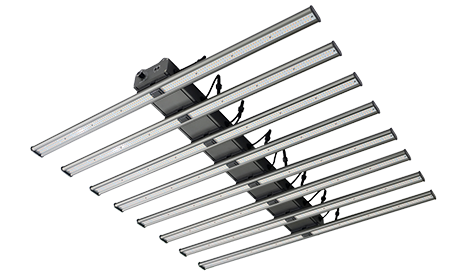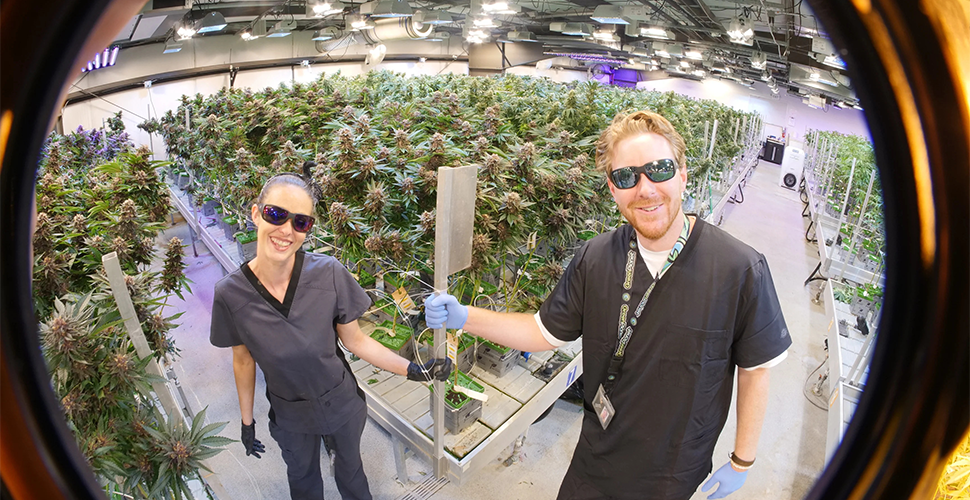S rozšířenou aplikací špičkových technologií, jako jsou velká data a algoritmy umělé inteligence v zemědělském sektoru, vertikální zemědělství v rámci moderní zemědělské revoluce dosáhlo významného pokroku a rozvoje.
Využitím pokročilé biotechnologie, přesných metod analýzy dat a vysoce automatizované systémy řízení pěstování úspěšně překonává omezení tradičního zemědělství, jako je přírodní sluneční světlo, sezónní změny a změny teploty, dosažení nepřetržité a efektivní výroby rostlin.
Tato transformace výrazně snížila spotřebu vody, snížila spoléhání se na omezené zdroje půdy, a tak převrátila zemědělský model, který byl zaveden po tisíciletí, a osvobodil ji od omezení přírodních podmínek.

V posledních letech došlo k nárůstu skleníkových zahradnictví a domácí zemědělství po celých Spojených státech a Kanadě, což přineslo koncept vertikálního zemědělství do popředí severoamerické fáze. Kromě toho bylo tempo technologického pokroku v této oblasti pozoruhodně rychlé.
Zároveň nelze podceňovat impozantní průmyslovou sílu Číny. Díky silné výrobní základně a vysoce efektivním provozům dodavatelského řetězce se Čína pevně etablovala jako klíčový hráč při industrializaci vertikálního zemědělství.
Stačí se podívat na tato čísla! Severoamerický region již velí přibližně 35% globálního vertikálního zemědělského trhu. Spotřebitelé se hrnou do organických potravin a zvyšují poptávku po stoupání. Odhaduje se, že do roku 2028 by severoamerický trh s vertikálním zemědělstvím mohl dosáhnout neuvěřitelných 5,37 miliard USD, což by vykazovalo rychlý růst.
Díky špičkové biotechnologii, inteligentní kultivační systémy a technologiemi těžby dat stojí severoamerický region pevně v popředí této zemědělské technologické rasy.
Avšak i ta nejmodernější technologie má své slabosti. Vysoké náklady na práci a komplexní řízení dodavatelského řetězce se staly menšími zátarasy pro industrializaci vertikálního zemědělství v Severní Americe.
U některých společností jsou vysoké náklady na hardware bolestně zřejmé a tempo iterace se zdá být pomalé. Ale nemyslete si, že jen sedí a dívají se! Důvěryhodné podniky již dlouho vymýšlejí způsoby, jak tyto překážky prolomit!
Například Pinnacle Food v Kanadě se v loňském roce spojil s čínskou společností Banjia Technology a kombinoval svou inteligentní zemědělskou technologii s čínskou výrobní statečností.
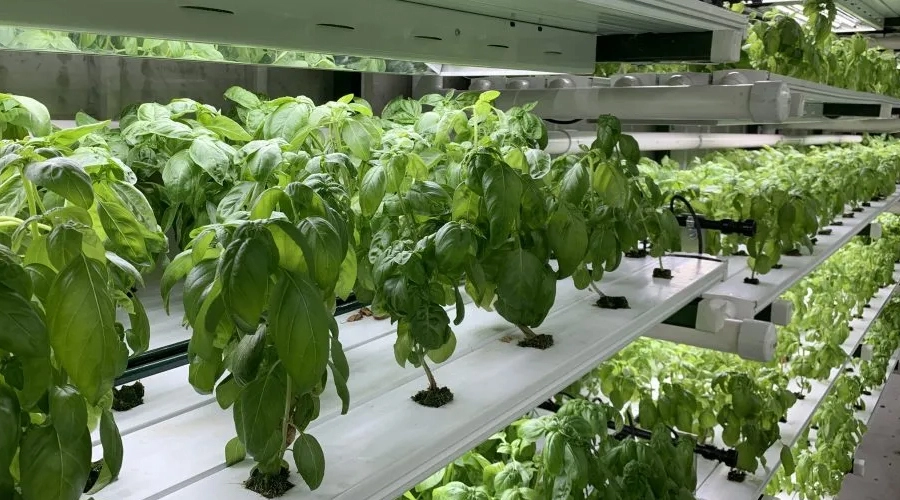
Tato vysněná spolupráce posunula výrobu velkého počtu špičkových zařízení a spotřebního materiálu do čínského dodavatelského řetězce.
Generální ředitel PF také zmínil, že čínský výrobní průmysl patří mezi nejlepší na světě s robustním a efektivním dodavatelským řetězcem.
Spolupráce se ukázala jako vysoce efektivní, a to nejen zlepšuje škálovatelnost a efektivitu výroby produktů, ale také zrychluje tempo aktualizací zařízení. A co je nejdůležitější, výrazně to snížilo náklady!
Nakonec, zatímco Severní Amerika může vést cestu ve vertikálním zemědělství, neustále osvěžující průmyslové záznamy s technologickými inovacemi a příklad pro zemědělskou modernizaci po celém světě, může skutečná příležitost pro industrializaci a významný rozvoj vertikálního zemědělství v Čínské úrodné půdě.
Od chovu semen po výrobu, zpracování, přepravu a konečný prodej se Čína může pochlubit komplexním systémem dodavatelského řetězce, který účinně kontroluje výrobní náklady a zvyšuje konkurenceschopnost trhu.
Čínská špičková infrastruktura, včetně moderních budov, pokročilých zařízení a čisté energie, navíc vytváří vynikající podmínky pro založení a růst vertikálního zemědělství.
Nejen to, ale rostoucí počet maloobchodních gigantů se také pustí do vertikálních zemědělských investic.
Dan Nielsen ze sezónní společnosti jednou sdílel na LinkedIn, “V budoucí vertikální zemědělské vlně se tito velcí maloobchodníci s řetězci pravděpodobně přeměňují na přední investory na vertikálních farmách.” Vezměte si například Norskou společnost Coop Company, která na konci roku 2023 oznámila spolupráci s místní společností Avisomo na vybudování nového továrního projektu.
Ve Velké Británii Ocado (který investoval do Infinite Farms v roce 2022 a dříve investoval do Jones Food Company), Walmart vsadil na hotčí v roce 2022 a belgickou skupinu Colruyt (který letos spustil nový systém vyvinutý společně s Mechatronixem). Toto jsou živé příklady gigantů maloobchodního průmyslu, kteří se pustí do vertikálního zemědělství.
Pokud jde o problém s nákladmi vertikálního zemědělství, může to být významné, ale to může být absorbováno vyrovnáváním různých aspektů hodnotového řetězce. Buď spotřebitelé platí za vyšší kvalitu, nebo proto, že investice představuje pouze malou část konečné ceny, například v luxusních restauracích, spotřebitelé toho více přijímají.
Když se maloobchodníci hluboce zapojí a vertikálně se integrují, jsou ochotni zaplatit trochu více, protože jim to umožňuje získat kus koláče dodavatele, i když to není velká částka, stále se počítá jako vnitřní příjmy.
Stručně řečeno, zemědělská technologie vzkvétá po celém světě a v budoucnu využívá svou robustní a efektivnější síť dodavatelského řetězce spolu se stále sofistikovanější infrastrukturou, Čína má potenciál zapojit se do hluboké spolupráce s mezinárodními pokročilými podniky v oblasti vertikálního zemědělství.
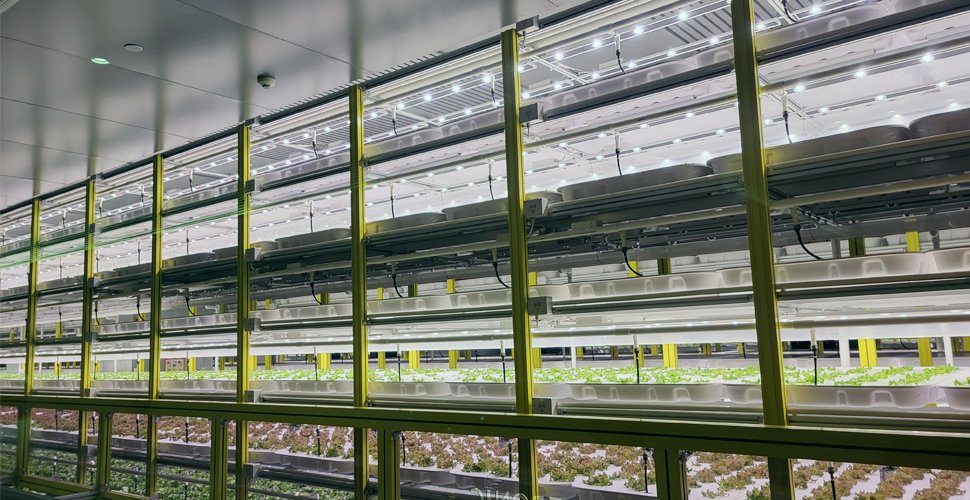
Tato spolupráce by mohla usnadnit přechod vertikálního zemědělství směrem k větší industrializaci a škálovatelnosti.
Chcete zůstat na vrcholu trendu zeleného života a zažít radost z pěstování vašich rostlin? Pak určitě nemůžete nechat ujít naše SG40 Vertikální hydroponická zahrada! Nejedná se jen o kompaktní a praktický nástroj pro zahradnictví, ale také tajná zbraň, která se stane moderním městským farmářem.
Je to jako továrna na miniaturní rostlinné sny, kterou lze umístit na váš balkon, obývací pokoj nebo kancelář, což vám umožní pustit se do vzrušujícího vnitřního svislého zemědělského dobrodružství. Při snadném provozu si můžete užít čerstvé, čisté a soběstačné sklizně ovoce a zeleniny a naplnit váš život vitalitou a vitalitou.
Připojte se k nám a použijte vertikální Hydroponic Garden SG40 k zahájení své továrny na Mini Plant a pusťte se do nádherného experimentu!

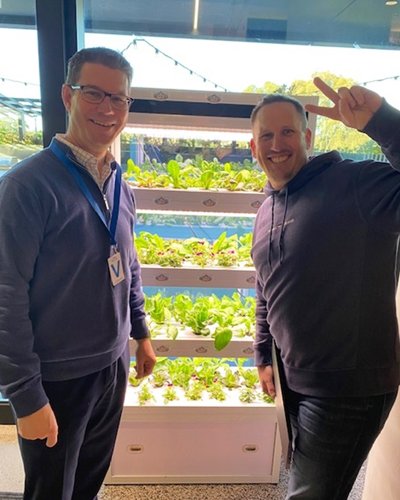

Jayes
Jako digitální marketingový manažer ve společnosti AUXGROW spojuje Jayes vášeň pro hydroponické systémy a odborné znalosti v oblasti LED pěstebních světel. Díky praktickým zkušenostem a hlubokému porozumění vás Jayes provede světem udržitelného pěstování.

